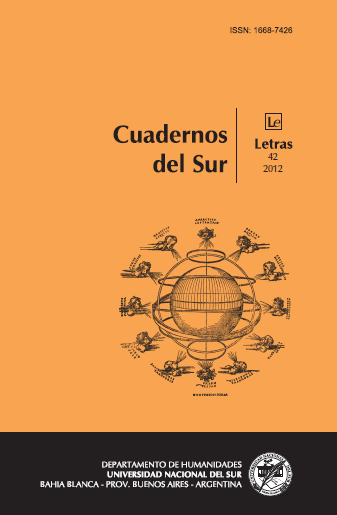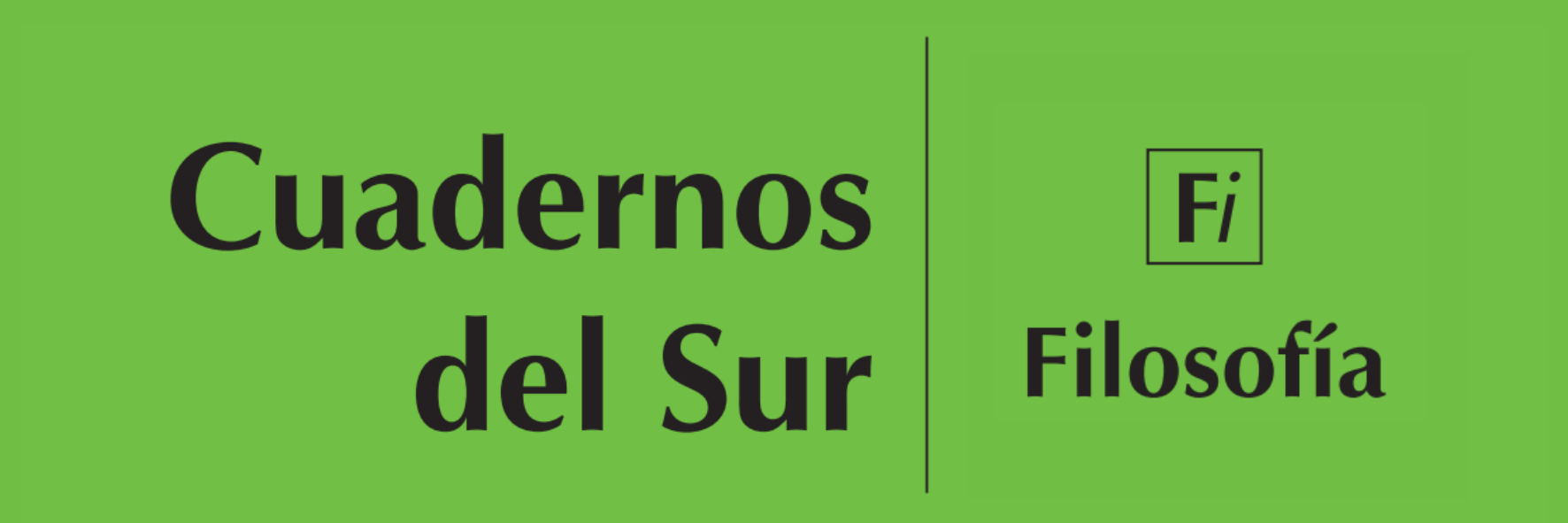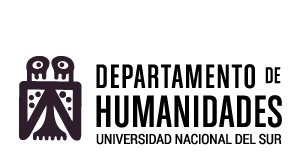Lectura fundante y lectura posible: “El matadero” de Esteban Echeverría como texto realista y/o como alegoría saintsimoniana
Keywords:
“El matadero”, Allegory, Saint-SimonAbstract
This essay analyzes two ways of reading “El matadero” de Esteban Echeverría. In the first place, the realistic way Juan María Gutiérrez establishes in a footnote he adds to the story when he publishes it for the first time. This realistic way of reading and its topics, that associates “El matadero” with a picture and a testimony by using different metaphors, has been the most commonly followed by literary criticism during all 20th Century. In the second place another way of reading the text will be explored, a one that Jorge Aguilar Mora proposes, an allegorical way that connects it with Echeverría’s saintsimonian thought. This second way of reading allows us to recuperate the story context of production as well as integrates the author’s literary work with his philosophical and political writings.
Downloads
References
Aguilar Mora, José (1998), Literatura Latinoamericana del Siglo XIX, Departamento de Español y Portugués de la Universidad de Maryland, College Park.
Alazraki, Jaime (1995), “Sobre el género literario de ‘El matadero’”, en AAVV, Teoría e interpretación del cuento, Berlín, Peter Lang, pp. 430-442.
Altamirano, Carlos y Sarlo, Beatriz (1991), “Prólogo”, en Echeverría, Esteban, Obras escogidas, Caracas, Biblioteca Ayacucho, pp. 1-22.
Amante, Adriana (2003), “La crítica como proyecto. Juan María Gutiérrez”, en Jitrik, Noé (dir), Historia crítica de la literatura argentina, Vol. 2, Buenos Aires, Emecé, pp. 161-190.
Anderson Imbert, Enrique (1954), Historia de la literatura hispanoamericana, México DF, Fondo de Cultura Económica.
Barthes, Roland (1987), “El efecto de realidad”, en El susurro del lenguaje, Barcelona, Paidós, pp. 183-187.
Cabañas, Miguel Ángel (1998), “Géneros al matadero: Esteban Echeverría y la cuestión de los tipos literarios”, Revista de Crítica Literaria Latinoamericana, nº 48, pp. 133-147.
Carilla, Emilio (1993), “Juan María Gutiérrez y ‘El matadero’”, Thesaurus, vol. XLVIII, n° 1, pp. 30-68.
Cvitanovic, Dinko (1985), “Larra y Echeverría: Apuntes sobre tendencias alegorizantes en el costumbrismo romántico”, Cuadernos del Sur, n° 18, pp. 21-33.
Degiovanni, Fernando (2007), Los textos de la patria. Nacionalismo, políticas culturales y canon en Argentina, Rosario, Beatriz Viterbo.
Fontana, Patricio y Román, Claudia (s/f), “Notas sobre algunos textos críticos sobre ‘El matadero’ (1871-2006)”, Actas I Jornadas de historia de la crítica en la Argentina, pp. 188-195, [disponible en filo.uba.ar/contenidos/carreras/letras/actas.../25Fontana-Roman.pdf].
Halperín Donghi, Tulio (1951), El pensamiento de Echeverría, Buenos Aires, Sudamericana.
Jitrik, Noe (1971), “Forma y significación en El matadero de Esteban Echeverría”, en El fuego de la especie, Buenos Aires, Siglo Veintiuno, pp. 63-98.
Lojo, María Rosa (1991), “’El matadero’ de Esteban Echeverría: la sangre derramada y la estética de la ‘mezcla’”, Alba de América, nº 9, pp. 41-63.
Orgaz, Raúl (1934), Echeverría y el Sain-Simonismo, Córdoba, Imprenta Argentina.
Saint-Simon, Claude Henri de (1834) [1825], New Christianity [Le Nouveau Christianisme], London, B. D. Cousins.
Salessi, Jorge (1995), Médicos maleantes y maricas, Rosario, Beatriz Viterbo.
Sosnowski, Saúl (1981), “Esteban Echeverría: el intelectual ante la formación del estado”, Revista Iberoamericana, vol. XLVII, pp. 293-300.
Downloads
How to Cite
Issue
Section
License
Copyright (c) 2012 María del Carmen Marengo

This work is licensed under a Creative Commons Attribution-NonCommercial-ShareAlike 4.0 International License.
Aquellos autores/as que tengan publicaciones con esta revista, aceptan los términos siguientes:
- Los autores/as conservarán sus derechos de autor y garantizarán a la revista el derecho de primera publicación de su obra, el cuál estará simultáneamente sujeto a la licencia Atribución-No Comercial 4.0 Internacional CC BY-NC 4.0.
- Los autores/as podrán adoptar otros acuerdos de licencia no exclusiva de distribución de la versión de la obra publicada (p. ej.: depositarla en un archivo telemático institucional o publicarla en un volumen monográfico) siempre que se indique la publicación inicial en esta revista.
- Se permite y recomienda a los autores/as difundir su obra a través de Internet (p. ej.: en archivos telemáticos institucionales o en su página web) una vez publicado su trabajo, lo cual puede producir intercambios interesantes y aumentar las citas de la obra publicada. (Véase El efecto del acceso abierto).








